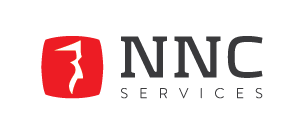Who is your customer? or... B2B market segmentation!
By b2b best practices, b2b customer aquisition, marketing segmentation, segmentation, blog, targeting
There’s so much literature about customer segmentation, that I had to fight with myself to actually write about this and not just dump a page full of links on this topic J But then, I pulled myself to it because segmentation does not work properly with many projects. Why? Because some “minor” detail will accidentally fall outside the big process of segmentation, like:
- your history on the market?
- what’s your product roadmap?
- are you competitive on the market segment, or you just added it to have a larger market to address?
- And the list may go on…
In B2C there are many segmentation models that work especially for creating different product or service offerings, but in B2B, I found it more efficient to apply segmentation mainly to drive lead generation, that is better targeting and positioning your offering with each segment.
Another challenge for me with this post: justify why you should segment your market before actually building up your positioning and USP. It is surprising, but most literature explains first how you build up your positioning and USP, and then go into market analysis and segmentation. I think that's WRONG! (I do not use caps so often so this must be emphasized as a critical point here).
If you are to build your positioning, your USP (unique selling proposition) but you do not know yet whom you’re selling to, meaning what’s your segment, how are you actually going to do this? Well, one way this can work, is to address with your USP the same clients that you have today, which is not definitely wrong, but if you want to develop your business… and usually this is the whole point of strategic planning, than first you need to know your customer and only then you can develop the next steps in your planning. Even if you only target development in your own customer base, you still need to segment your market, otherwise you won’t be able to understand why they are your customers, and how can you keep them.
Should you target the business or the decision maker within that business?
Another issue we have in B2B, when segmenting …We’re not sure who’s the customer! Is it the business (with specific set of needs)? Or.. Is it the decision maker with individual goals and purposes on the job? For SMB it’s simple because we usually deal with individuals who run or have a direct participation in the business, so there is (a least in theory) a common ground between business development and decision maker’s needs. In targeting large business, challenge is so much more difficult. It’s worst when it’s a decision making committee of 2 or 3 people, than, segmentation based on persona’s becomes really messy.
So what do you do when your head starts spinning off on this dilemma? You can address these separately in your planning:
- What’s the business like?
- Who’s the decision maker?
- Who can influence the purchase decision?
- What are the criteria for acquiring your type of products or services? for both business, individual or decision making groups.
Bottom-UP!!! Start segmenting from within your customer base!
In B2B best segmentation models follow a client profiling pattern. Meaning that first you have to describe in detail what type of customer you need than go up there on the big world and see where does this customer profile can be found more often. This process make your marketing and sales efforts much more effective.
So what are some steps that can guide you on your segmentation?
- What are your customers like?
Right now, what type of customers do you have and you want more of? Where and how did you reached them? What do they all have in common or do they behave in a specific way? What markets do you serve?
This should give you a couple of valid points in profiling your customer, but it should also be a god opportunity for you to analyze your customer base and understand which clients are the type of clients that you’d like more for your business, where do you provide more value and which ones are more profitable. - Where does your desired customer profile replicate?
Based on common points identified above, brainstorm on where on the market you can find the same points? Clustering companies is usually very helpful in this step: do they all belong o a niche? are they all subscribed to a industry association? are they all clients of a certain supplier or do they all use a certain distribution channel? etc. - With the segments you got from previous steps, how do you want to grow your business?
From what you result with in the previous steps, what do you want to maintain and what to change? Any additional customer groups that your business could serve? Any new segments to enter with little or no effort? - How will your targeted segments develop further?
The market segments that you identified, how are they developing further? Is there room for growth or are they on a decreasing trend? Which ones grow faster and where’s less competition for your business? Can you cross-reach
Top-down! From a sea of businesses to the one island you need to thrive!
Usually, in B2B I saw some segmentation models that seldom if not never work like segmentation based on company size, company type, number of employees, turnover etc. How can this be segmentation, really? This is more of a suspects catalogue of categories than a market segment. Another long-desired and applied criteria, the vertical segmentation, is so generic that virtually anyone can be your customer within that vertical and it surely won’t help you in understanding your value, correct targeting or generating leads.
This model comes from our need to standardize this process which in b2b is going to be difficult to achieve. For the ones that do dare to proceed with this criteria, at least please go with a cross analysis or a matrix of the above. It will bring you closer to your market segments but it won’t give you much to work with further in your planning. You’ll probably end up with a good potential customers’ classification, but not with your most desired segment.
To further get to a targeted segment, put your offering in front each framing you came up with in the matrix and see which one will require your offering. This way, you will identify each segment but make sure you understand the distinctions between them, to address them correctly.
How will business2business segmentation pay off?
- It will help you target exactly the right customers
- It will help better position, easier acquire and retention customers.
- It will help you correctly communicate with your targeted segments
- You’ll be able to provide more value and explain your value better
- You can gain a strategic position on a certain niche, to diminish competition
- You’ll figure out how to drive further growth
- Many, many, many more….
Is there a more generic and standardized approach to segmentation?
Well, none that I could find out, but there's always room for creativity. So if you do find out of any other b2b segmentation process that works, drop a note here and I'll be happy to include it.
If you're in b2b you know one size does not fit all. Take some of the steps indicated in the process above... I'll bet on some quick visible results.
***
Other good resources on this subject, presenting you with other good choices for b2b segmentation are:
- Emma Warrillow - Can you “Divide and Conquer” the B2B Market?
- Gareth Mitchell-Jones - B2B Segmentation Driving Loyalty Program Development
- Jim Laiderman - A structured approach to B2B segmentation
- Paul Hague - Market Segmentation in B2B Markets
- Do You Know Who Your Customers Are and What Problems They Need Solved?
***
Listed below are links to weblogs that reference the B2B market segmentation article:
>>B2B MARKET SEGMENTATION from Eliezer Gonzalez
Latest Posts
Categories
- B2B Marketing (190)
- blog (147)
- Social media marketing (68)
- social media (52)
- Marketing (42)
- Digital Marketing (41)
- Lead Generation (39)
- Marketing Strategy (34)
- Lead Generation (33)
- Press releases (27)
- B2B (26)
- Behind the Scenes (26)
- marketing automation (26)
- Content Marketing (23)
- Marketing (21)
- Strategy (21)
- b2b tactics (19)
- b2b business objectives (17)
- online marketing (17)
- SEO (15)
- content marketing (15)
- Business continuity (14)
- google ads (14)
- AI (13)
- AI Marketing (13)
- B2B Campaigns (13)
- B2B business (13)
- PR Communication (13)
- Business Growth (12)
- PPC (12)
- b2b lead generation (12)
- b2b strategy (12)
- B2B Blogging (11)
- Marketing News (11)
- Marketing Planning (11)
- B2B PPC Campaign (10)
- Conversion Rate (10)
- Employer Branding (10)
- Marketing Automation Tool (10)
- marketing tips (10)
- Social Media Strategy (9)
- White papers (9)
- artificial intelligence marketing (9)
- inbound marketing (9)
- B2B companies (8)
- B2B email marketing (8)
- Fractional CMO (8)
- b2b social media (8)
- crisis management (8)
- marketing automation for B2B businesses (8)
- online PR (8)
- E-books (7)
- HubSpot (7)
- Pinterest (7)
- SEO trends (7)
- Twitter (7)
- b2b sales (7)
- content strategy (7)
- marketing plan (7)
- social networks (7)
- ABM Strategy (6)
- Business Development (6)
- Facebook (6)
- SEO Strategies for B2B Companies (6)
- Webinar Recording (6)
- artificial intelligence (6)
- marketing objectives in b2b (6)
- sales prospecting (6)
- technology marketing (6)
- CMO (5)
- Digital Transformation (5)
- Email Marketing (5)
- Events (5)
- Facebook page (5)
- Google AdWords (5)
- IT (5)
- KPI measurements (5)
- Landing Page (5)
- Marketing Management (5)
- Marketing Trends (5)
- automated marketing (5)
- b2b best practices (5)
- b2b prospecting (5)
- b2b strategies (5)
- digital communication strategy (5)
- internationalisation (5)
- marketing automation systems (5)
- social media marketing campaign (5)
- social media trends (5)
- trends (5)
- B2B marketing campaigns (4)
- Cost per Lead (4)
- Digital Influence (4)
- HubSpot Certified Agency (4)
- Instagram (4)
- Lead Generation Trends (4)
- LinkedIn (4)
- LinkedIn marketing strategy (4)
- NNC Services (4)
- Paid Advertising (4)
- Tech Startup (4)
- Tech Startup Marketing Strategy (4)
- Uncategorized (4)
- Video Marketing Strategy (4)
- b2b sales plan (4)
- best practices during crisis (4)
- leading marketing automation tools (4)
- market entry (4)
- marketing content (4)
- personal branding (4)
- proactive marketing (4)
- B2B Marketing Budget (3)
- B2B marketing inbound (3)
- B2B marketing strategy inbound (3)
- Business Strategy (3)
- Conversion Rate Optimization (3)
- Financial (3)
- Google Analytics (3)
- Google+ (3)
- Internal Marketing (3)
- Linkedin Groups (3)
- Marketing Automation Migration (3)
- Online Events (3)
- Pardot (3)
- Pardot to HubSpot Migration (3)
- SMB international Business Models (3)
- Tech (3)
- Video Content (3)
- Webinar (3)
- abm (3)
- b2b blogging (3)
- b2b customer aquisition (3)
- b2b growth (3)
- barriers to entry (3)
- blogging (3)
- brand engagement (3)
- business plan (3)
- buyer persona (3)
- customer research (3)
- demand generation (3)
- doing business abroad (3)
- employer brand (3)
- employer branding strategy (3)
- inbound leads (3)
- marketing audit (3)
- marketing automation strategy (3)
- marketing leadership (3)
- marketing portfolio audit (3)
- online communities (3)
- online demand (3)
- outsourcing (3)
- prospects (3)
- storytelling (3)
- tech business (3)
- visual content (3)
- 4P’s (2)
- ABM sales outreach (2)
- Agile Marketing (2)
- B2B Contacts (2)
- B2B Email Marketing Campaigns (2)
- B2B Marketing Collaterals (2)
- B2B digital agency (2)
- B2B presentations (2)
- Business Intelligence (2)
- Channel Integration (2)
- Customer-Centric (2)
- DIY business (2)
- Facebook content (2)
- Go-to-Market Strategies (2)
- Hubspot Inbound (2)
- Hubspot Portal audit (2)
- Hubspot marketing portal (2)
- IT recruitment (2)
- Innovation (2)
- Integrated Marketing (2)
- Internship (2)
- Lead Gen Automation Tools (2)
- Microsoft Dynamics (2)
- PPT (2)
- Pay-per-Click (2)
- Product Marketing (2)
- ROI (2)
- RevOps (2)
- SMART (2)
- SMB (2)
- SME (2)
- Sales Automation (2)
- Sales Automation Tools (2)
- Salesforce (2)
- Search Engine Optimization (2)
- Telemarketing (2)
- Tumblr (2)
- action plan (2)
- b2b planning (2)
- b2b tradeshow (2)
- b2b video marketing (2)
- banking (2)
- business communities (2)
- business management (2)
- buyer journey (2)
- buyer motivation (2)
- celebrities (2)
- client presentations (2)
- company marketing (2)
- company presentation rules (2)
- context marketing (2)
- conversion tracking (2)
- corporate presentations (2)
- data driven (2)
- eCommerce Marketing (2)
- employee value proposition (2)
- employer value proposition (2)
- entertainment industry (2)
- free marketing tools (2)
- fundraising (2)
- gdpr (2)
- how to present in front of customers (2)
- how to write a presentation (2)
- marketing investing (2)
- marketing outsourcing (2)
- marketing segmentation (2)
- marketing upskilling (2)
- networking communities (2)
- nonprofits (2)
- omnichannel marketing (2)
- online strategies (2)
- outbound marketing (2)
- outsourced marketing (2)
- ppc ads (2)
- ppc management (2)
- ppc strategy (2)
- presentation structure (2)
- product audit (2)
- product portfolio (2)
- promotion (2)
- sales enablement (2)
- sales funnel (2)
- segmentation (2)
- service marketing (2)
- slideshows (2)
- succes management (2)
- supporters (2)
- targeting (2)
- tourism industry (2)
- tradeshow attendance (2)
- tradeshow objectives (2)
- tradeshow results (2)
- tradeshow strategy (2)
- webinar tips (2)
- website optimization (2)
- 2014 (1)
- ActiveCampaign (1)
- Ad Rank (1)
- AdidasOriginal (1)
- Android (1)
- B2B Case Study (1)
- B2B Digital Training (1)
- B2B e-mail copy (1)
- B2B e-mail marketing (1)
- BWBB (1)
- Blockchain (1)
- Blockchain Technologies (1)
- CTA button (1)
- Design Thinking Model (1)
- Direct Marketing (1)
- Dreamforce 2017 (1)
- Drip Marketing Campaign (1)
- Dynamics 365 (1)
- Dynamics 365 marketing (1)
- Dynamics Marketing (1)
- E-Commerce (1)
- Eastern Central Europe (1)
- Eastern Europe (1)
- Emotional B2B Marketing (1)
- Employee Feedback (1)
- Event management (1)
- External Marketing (1)
- Facebook Apps (1)
- Facebook marketing (1)
- Freemium SaaS (1)
- Go-to-Market (1)
- Google Ad Grant (1)
- Google Ads statistics (1)
- GoogleAdGrant (1)
- HR planning (1)
- Hubspot Outbound (1)
- IT marketing (1)
- IT outsourcing (1)
- IT service price (1)
- Intel (1)
- LeadGeneration (1)
- Machine Learning (1)
- Market Entry Strategy (1)
- Market Research (1)
- Marketing Metrics (1)
- Marketing Results (1)
- Marketing frameworks (1)
- Marketing vs Sales (1)
- Marketo (1)
- Medium Companies (1)
- Microsoft Dynamics 365 (1)
- NGO (1)
- Networking (1)
- Organizational culture (1)
- PPC statistics (1)
- PPC stats (1)
- Personalized messages (1)
- Pictures (1)
- Podcast SEO (1)
- Price (1)
- Recruitment Marketing (1)
- Revenue operations (1)
- Romanian content marketers (1)
- SaaS (1)
- Salesforce Partners (1)
- SharpSpring (1)
- Small Business (1)
- Social Proof (1)
- StopWar (1)
- Tactics (1)
- Target (1)
- Tech events (1)
- Template (1)
- Till Hahndorf (1)
- Types of Google Ads (1)
- Ukraine (1)
- VirginAmerica (1)
- Voice Search SEO (1)
- Work alternative (1)
- Youtube Ads (1)
- ads setting (1)
- app (1)
- artists (1)
- b2b benchmark (1)
- b2b buyer (1)
- b2b buying process (1)
- b2b buying trends (1)
- b2b customers (1)
- b2b marketing vs sales (1)
- b2b modeling (1)
- b2b price (1)
- b2b viral campaign (1)
- benghmarking (1)
- brand advocates (1)
- business (1)
- business growth course (1)
- buyer behaviour in b2b (1)
- buyer persona template (1)
- buyers (1)
- call to action (1)
- clients (1)
- cold-calling (1)
- company (1)
- competition (1)
- copywriting (1)
- customer segmentation (1)
- cybersecuritystrategy (1)
- dan schawbel (1)
- detailed buyer persona (1)
- differentiators (1)
- downloadable resources (1)
- e-mail campaigns (1)
- e-mail message and copy (1)
- employer brand experience (1)
- employer of choice (1)
- entrepreneurs (1)
- environmental marketing (1)
- fans (1)
- gdpr benefits (1)
- gdpr benefits for marketing (1)
- go-to-market channels (1)
- green marketing (1)
- growth marketing (1)
- hotel (1)
- how to find leads (1)
- how to sell (1)
- human resources (1)
- iOS (1)
- inbound marketing services (1)
- inbound marketing vs outbound marketing (1)
- international business (1)
- investment in marketing (1)
- investors (1)
- jamie oliver (1)
- lead generation results (1)
- leads (1)
- letter writing (1)
- like (1)
- market price (1)
- marketing benchmarking (1)
- marketing flywheel (1)
- marketing goals (1)
- marketing investments (1)
- marketing letters (1)
- marketing message (1)
- marketing objectives (1)
- marketing strategy for 2022 (1)
- mobile (1)
- mobile marketing (1)
- music (1)
- new business opportunities (1)
- online reputation (1)
- personal branding tips (1)
- personell issues (1)
- photos (1)
- podcast (1)
- positive employer brand (1)
- ppc click fraud (1)
- price debate (1)
- price negociation (1)
- pricing (1)
- pricing stratey (1)
- product cost (1)
- product price (1)
- promote (1)
- recession tactics (1)
- roadmap (1)
- sales (1)
- script (1)
- seo practices (1)
- service price (1)
- services (1)
- setting objectives (1)
- setting the price (1)
- smart bidding (1)
- social channels (1)
- social networking (1)
- social platform (1)
- social recruitment (1)
- startup (1)
- subscribers (1)
- sustainability (1)
- tailored experience (1)
- talent pool (1)
- tech hub (1)
- tech professionals (1)
- tools (1)
- updates (1)
- viral campaignes (1)
- viral marketing (1)
- viral videos (1)
- visual (1)
- voice search optimization (1)











